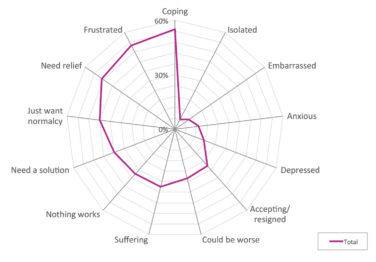Marketers understand the importance of preparing healthcare professionals (HCPs) and patients for productive exam room conversations. Targeted advertising has long been part of the process.
The old ways of measuring the effectiveness of this kind of outreach gave marketers many different vantage points but not a singular view of the full plan based on common metrics. As a result, marketers couldn’t always be sure they were getting the audience quality and health behavior they sought.
Today, to demonstrate campaign success and secure budgets for future work, marketers must present a comprehensive view of its effectiveness using consistent metrics across all tactics and channels. In other words, brands need a holistic marketing measurement plan.
What is Holistic Measurement?
Holistic measurement is a way to evaluate brand advertising campaigns against strategic goals—and provide the levers to make tactical changes tied to those goals. Holistic measurement makes it possible to measure every dollar spent on both direct-to-consumer (DTC) and HCP media. It begins with having the same metrics across all channels and a comprehensive analytics framework.
Holistic measurement may differ depending on your vantage point: brand level, indication level, DTC media, HCP marketing. Regardless, it will include granular measurement at each channel level: from TV and digital, point of care, print, and out-of-home. Holistic measurement provides consistent visibility that gives insights to each piece of a campaign as needed. In addition, because all marketing spending is tied to performance benchmarks, holistic measurement provides a way to repeat or amplify efforts—not only against your category, but also, the industry as a whole.
See the Impact of Each Channel More Clearly
When adopting holistic measurement, marketers can tie all key performance indicators (KPIs) to the same outcome—increased brand sales. The common metrics will deliver a clear understanding of the impact of each channel, both on its own and as part of the whole. Marketers can then pivot to do more of what’s working and less of what’s not—optimizing your marketing and executing with more accuracy. Most importantly, this will provide the information to defend and validate a marketing budget.
Holistic measurement makes it possible to find, engage, and optimize to the highest value healthcare audience. When your company can fully assess the impact of your marketing on patient and prescriber behavior, brands gain a competitive advantage. For example, these data points set a foundation for executing omnichannel marketing and tie marketing to field force activity, which can be used to support personalized HCP engagement across channels.
Holistic Measurement in Action
Many customers now have optimization in mind from the beginning and create programs with measurement built in.
One multi-indication brand put holistic measurement into action to assess performance and potential budget allocation at the indication, campaign, and channel levels. In addition to overall effectiveness, they assessed which indication campaigns were proving more effective in overlapped populations and discovered synergies between consumer and HCP campaigns. Consumers who saw DTC ads and then visited an HCP who had also been exposed to media aimed at a professional audience were more inclined to convert, and the resulting new-to-brand (NBRx) cost attributed to advertising was sharply lower than either consumer or HCP exposure alone.
In another example of holistic measurement, a brand team reduced spend by 17%, while NBRx increased by 20% and prescription refills (RRx) rose 7%. Going forward, the team will rely on this data to inform which channels and tactics to allocate spend to increase or maintain this efficiency gain.
Robust Benchmarks, Privacy-Safe Technology
To put holistic measurement in action, marketers need health data and privacy-safe technology to connect health data to media and consumer data. They must be able to measure all channels, eliminate gaps in analyses, and use robust benchmarks, not only for pharma and treatment categories, but also, across media channels and cross-channel overlap. Expertise to execute at scale should also be a key consideration, whether you are working on your own, or with a partner.
When looking for a partner, make sure they have expertise and experience in pharmaceutical industry marketing. This is a unique industry, with unique constraints. To maximize the value of the data that holistic measurement uncovers, it’s essential that partners have a deep understanding of ways key indicators can improve a brand strategy.
Holistic measurement is an evolving science. Used effectively, it can propel engagement with patients, educate HCPs, and grow a brand’s competitive advantage.










